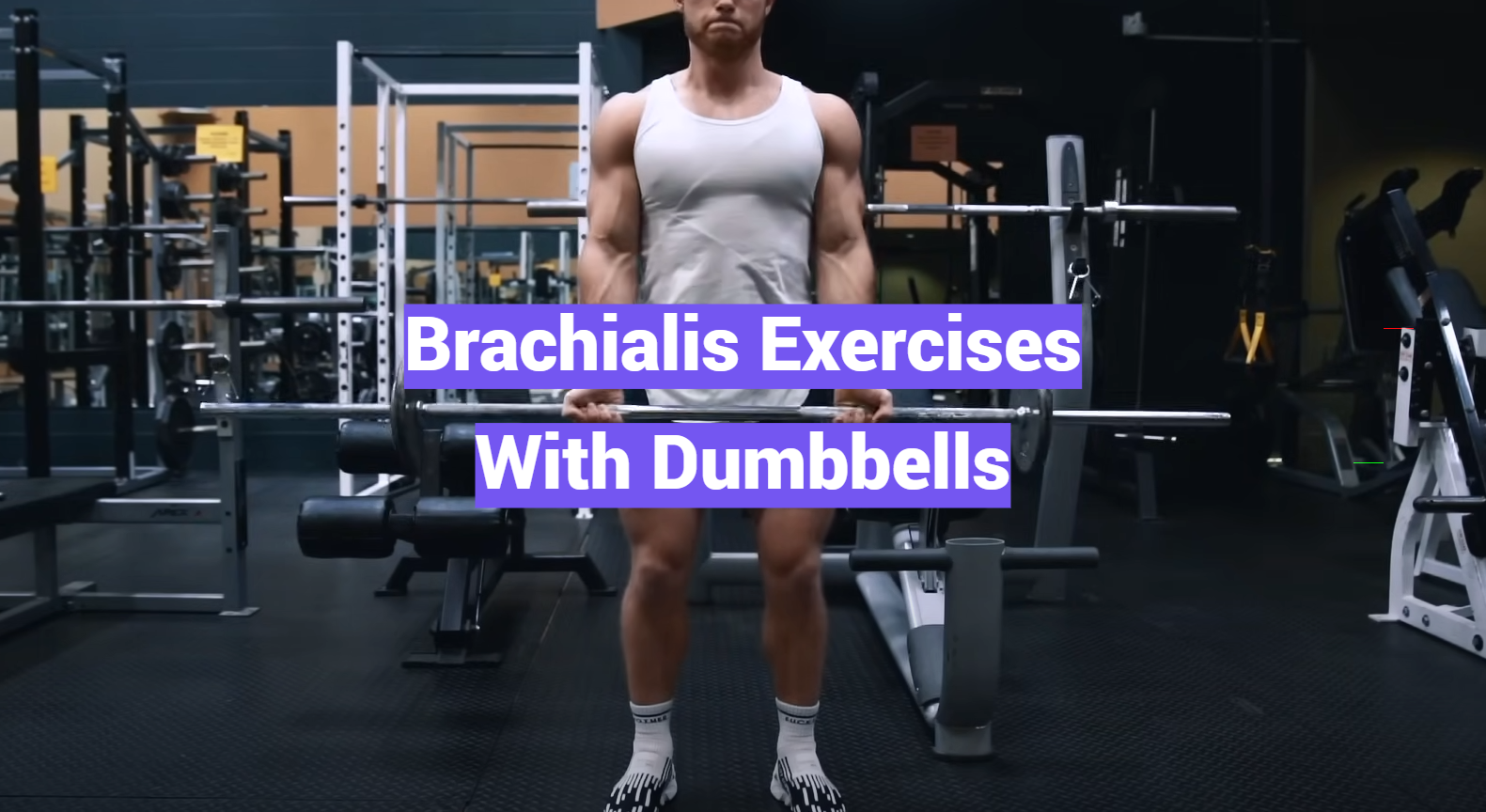Strengthening the brachialis, an often overlooked muscle in the upper arm, can significantly improve your arm definition and enhance overall upper body strength. Many exercises target this muscle, but incorporating dumbbells into your routine can provide optimal results. This guide will present a selection of effective brachialis exercises using dumbbells, highlighting their benefits and offering step-by-step instructions to ensure proper form and technique.
What is the Brachialis Muscle?
The brachialis muscle is a deep muscle in the upper arm that runs from the front of the humerus (upper arm bone) to the ulna (one of the forearm bones). It lies underneath the biceps and triceps muscles, making it less visible than its two more superficial counterparts. However, don’t let its location fool you – the brachialis is an essential muscle for arm strength and function.
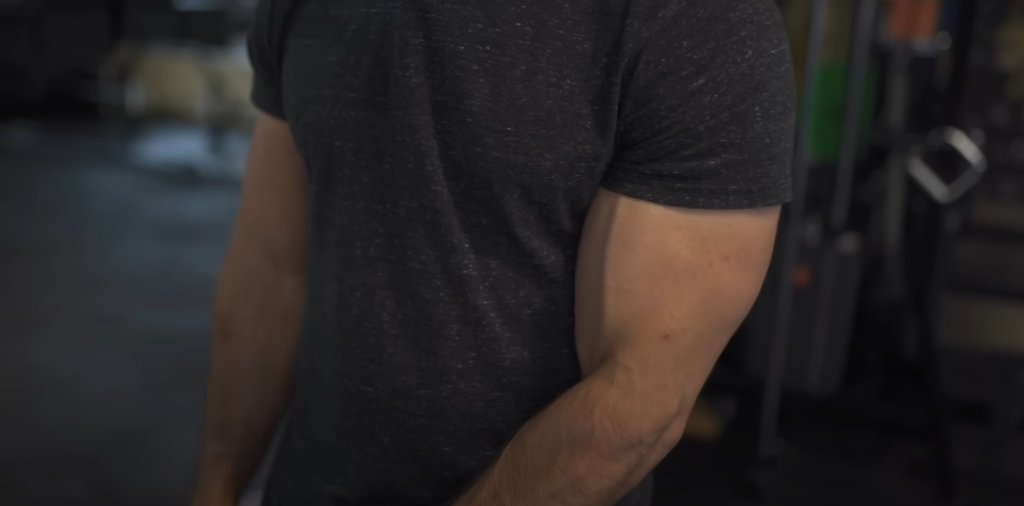
Importance of the Brachialis Muscle
The brachialis may not be as well-known or flashy as the biceps and triceps, but it plays a crucial role in everyday movements and athletic performance. It is responsible for flexing the elbow joint, which allows us to bend our arms and bring our hands closer to our shoulders. This is a motion that we use constantly in daily activities like lifting objects, carrying groceries, and even typing on a keyboard.
In addition to assisting with everyday movements, the brachialis also plays a significant role in sports performance. Strong brachialis muscles are essential for athletes who engage in throwing or swinging motions such as baseball players, tennis players, and golfers. Strengthening the brachialis can also improve grip strength, making it beneficial for weightlifters and rock climbers.
Benefits of Brachialis Exercises With Dumbbells
Dumbbells are a versatile and accessible tool for targeting the brachialis muscle. Unlike barbells or machines, which restrict movement to a fixed plane, dumbbells allow for a more natural range of motion, engaging the brachialis as well as other stabilizing muscles. Additionally, using dumbbells can help prevent muscle imbalances and promote symmetry.
Some popular exercises that specifically target the brachialis with dumbbells include hammer curls and reverse curls. Hammer curls involve holding the dumbbells with your palms facing each other and curling the weights towards your shoulders, while reverse curls involve holding the dumbbells with an overhand grip and curling them towards your shoulders. Both of these exercises primarily engage the brachialis muscle, making them essential for building strength in this area.
Tips for Performing Brachialis Exercises With Dumbbells
When doing any exercise that targets the brachialis with dumbbells, it’s essential to maintain proper form. This includes keeping your elbows close to your sides and avoiding swinging the weights or using momentum to complete the movement. It’s also crucial to choose an appropriate weight that challenges you but still allows for controlled and smooth movements.
Additionally, it’s essential to vary the exercises and rep ranges in your workout routine to continually challenge the brachialis muscle and prevent plateauing. Incorporating both hammer curls and reverse curls into your routine, as well as using different weights and rep ranges, can help keep your workouts effective.
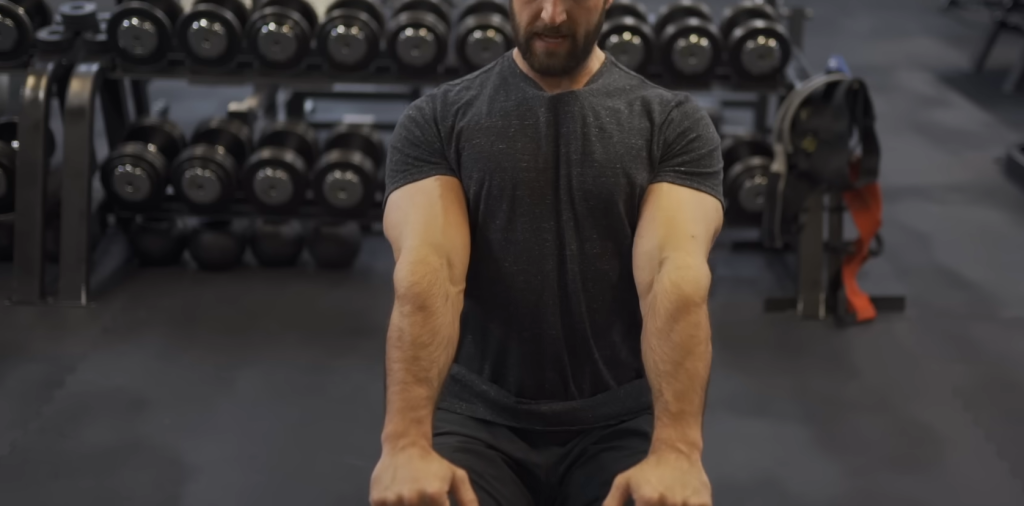
Precautions for Brachialis Exercises with Dumbbells
As with any exercise, it’s essential to listen to your body and avoid overdoing it. If you experience pain or discomfort while performing brachialis exercises with dumbbells, stop immediately and consult a medical professional.
It’s also crucial to warm up before starting any workout routine, including brachialis exercises with dumbbells. Warming up can help prevent injury and improve performance by increasing blood flow to your muscles and preparing them for exercise.
Common Mistakes to Avoid
When performing brachialis exercises with dumbbells, some common mistakes to avoid include using improper form, choosing weights that are too heavy, and neglecting to warm up. These mistakes can lead to injury or prevent you from properly targeting the brachialis muscle.
It’s also important not to neglect other muscles in the arms, such as the biceps and triceps, as they work together to perform many movements. Including a variety of exercises that target different muscles in the arms can help prevent muscle imbalances and improve overall arm strength.
Other Equipment for Brachialis Exercises
While dumbbells are an excellent tool for brachialis exercises, there are other pieces of equipment that can also be used to target this muscle. Cable machines, resistance bands, and even bodyweight exercises like push-ups can all engage the brachialis and contribute to a well-rounded workout routine.
Incorporating a variety of equipment into your workouts can help prevent boredom and challenge your muscles in different ways, leading to more significant gains in strength and muscle growth. It’s essential to consult a fitness professional or do proper research before attempting new exercises with equipment to ensure safety and effectiveness.
Tips for Proper Form and Technique
To get the most out of your brachialis exercises with dumbbells, it’s crucial to maintain proper form and technique. This includes keeping your core engaged, shoulders down and back, and using a controlled motion throughout the exercise. It’s also essential to breathe properly and avoid holding your breath.
Additionally, it can be helpful to visualize the muscle you are targeting while performing the exercise. For brachialis exercises, focus on contracting and squeezing the muscle as you lift the weights towards your shoulders.
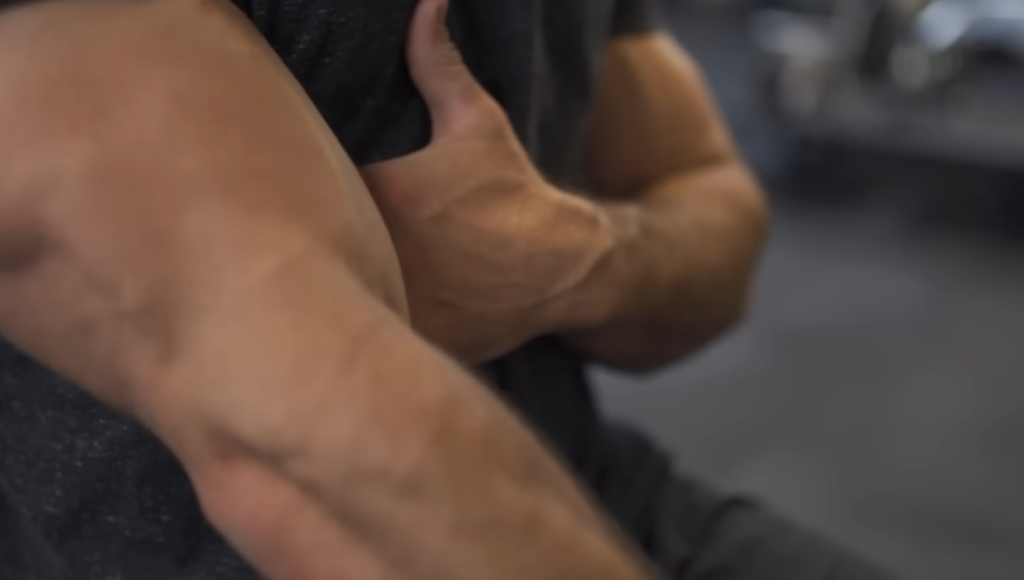
Incorporating Brachialis Exercises into Your Workout Routine
Including brachialis exercises with dumbbells into your workout routine can have numerous benefits, but it’s important to incorporate them in a balanced and strategic way. A good rule of thumb is to target each muscle group at least twice a week, allowing for rest and recovery in between.
It’s also essential to vary the exercises and rep ranges within your routine to continually challenge your muscles and prevent plateauing. Consider adding a mix of compound exercises, such as push-ups or rows, along with isolated brachialis exercises to target all areas of the arm.
In conclusion, incorporating brachialis exercises with dumbbells into your workout routine can have numerous benefits for both daily activities and sports performance. By following proper form and technique, choosing appropriate weights, and incorporating a variety of exercises, you can target this muscle effectively and safely. Remember to listen to your body, consult a professional when needed, and have fun while building strength in your brachialis muscle. So go ahead and grab those dumbbells for your next workout!
Alternative Exercises for Brachialis Development
Aside from the traditional dumbbell exercises, there are other alternative exercises that can help develop and strengthen the brachialis muscle. These include chin-ups or pull-ups, which involve pulling your body weight up to a bar using an underhand grip. This movement primarily engages the brachialis muscle and can be an effective way to target this area.
Another option is using a preacher curl machine, which specifically targets the brachialis muscle and can be a good variation to add to your routine. Resistance band hammer curls are also an effective alternative exercise that requires minimal equipment and can be done anywhere.
Is Brachialis Stronger than Biceps?
The short answer is, no. The brachialis is not stronger than the biceps. Both muscles have different functions and strengths that are important for overall arm strength.
Before we get into the details of why this is the case, let’s first understand what the brachialis muscle is and its role in arm function.
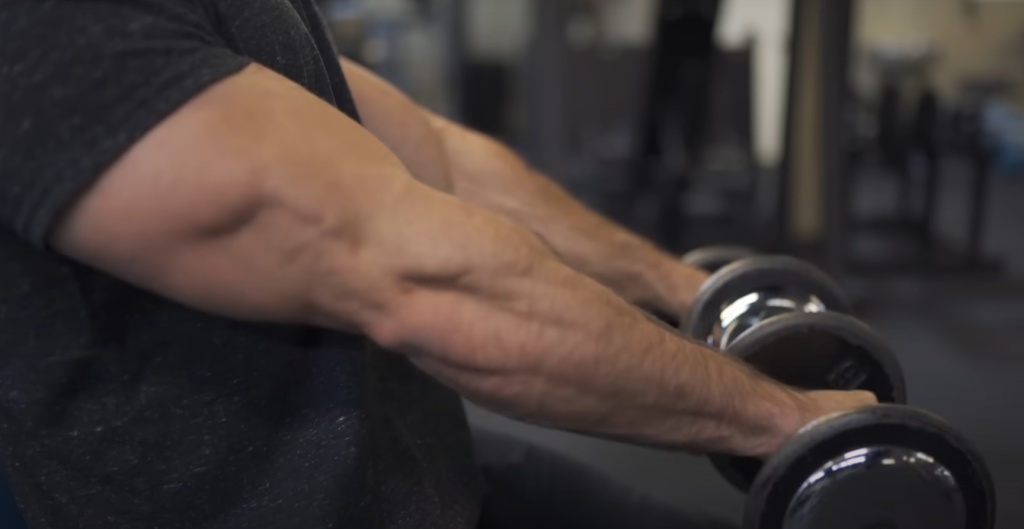
What is Brachialis?
Brachialis is a muscle located in the upper arm, specifically between the biceps and triceps. It originates from the lower half of the humerus bone (the upper arm bone) and attaches to the ulna bone in the forearm.
This muscle plays a crucial role in elbow flexion, which is bending your arm at the elbow joint. It also provides stability to your elbow joint when performing movements like lifting or carrying heavy objects.
Brachialis vs. Biceps
While both the brachialis and biceps are involved in elbow flexion, they have different anatomies and functions. The biceps is a two-headed muscle that originates from the scapula (shoulder blade) and inserts on the radius bone in the forearm.
The biceps is responsible for both elbow flexion and supination (rotating the forearm to turn your palm up). It also assists in shoulder flexion and acts as a stabilizer when holding onto objects.
On the other hand, the brachialis is a single-headed muscle that only plays a role in elbow flexion. It has a shorter lever arm compared to the biceps, which means that it is not able to generate as much force.
Importance of Both Muscles
While the biceps may be stronger than the brachialis, both muscles are important for overall arm strength and function. They work together to perform different movements and provide stability to your upper arm and elbow joint.
In fact, having a strong brachialis can help improve your bicep strength by providing a stable foundation for the biceps to work from. Neglecting either muscle can lead to imbalances and potential injuries.
Exercises for Brachialis
If you’re looking to specifically target and strengthen your brachialis, there are several exercises you can incorporate into your workout routine:
- Hammer Curls: This exercise involves holding dumbbells with a neutral grip (palms facing each other) and curling them towards your shoulders.
- Reverse Curls: Similar to hammer curls but with an overhand grip (palms facing down).
- Zottman Curls: This is a combination of hammer and reverse curls, where you start with a neutral grip and then rotate your palms to face down at the top of the movement.
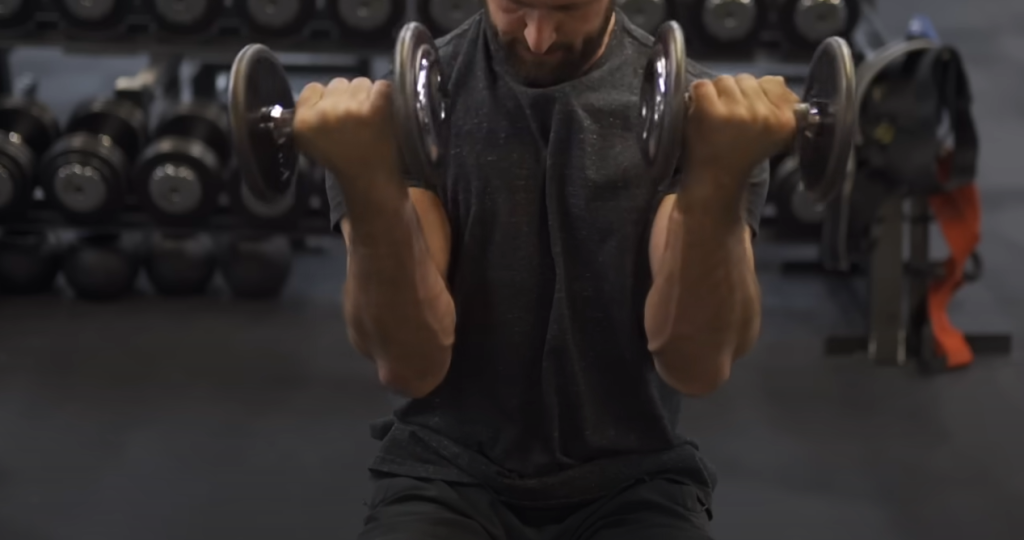
Do Curls Hit the Brachialis?
Yes, curls do target the brachialis muscle. However, the specific type of curl and grip used can determine how much activation your brachialis experiences.
As mentioned earlier, hammer curls and reverse curls are both effective exercises for targeting the brachialis. Using a neutral or overhand grip places more emphasis on this muscle compared to a traditional bicep curl with an underhand grip.
Is the Brachialis Fast or Slow Twitch?
The brachialis muscle is a key player in upper body movements, particularly those involving the elbow joint. It lies deep beneath the biceps and triceps muscles, and plays a major role in flexing the elbow. This muscle is often overlooked, but it’s an important muscle to target for overall arm strength and aesthetic.
When it comes to training our muscles, understanding the type of muscle fibers present in a specific muscle is useful. This knowledge can help us tailor our workouts and training methods to achieve desired results more efficiently.
So, what type of muscle fiber does the brachialis contain? The simple answer is both fast-twitch and slow-twitch fibers. However, research shows that it has a higher proportion of fast-twitch fibers compared to slow-twitch fibers. This means that the brachialis has a greater capacity for generating explosive, powerful movements.
Fast-twitch muscle fibers are responsible for producing quick, forceful contractions and are activated during high-intensity exercises such as sprints or heavy weightlifting. Slow-twitch muscle fibers, on the other hand, are involved in more sustained activities like endurance running or cycling.
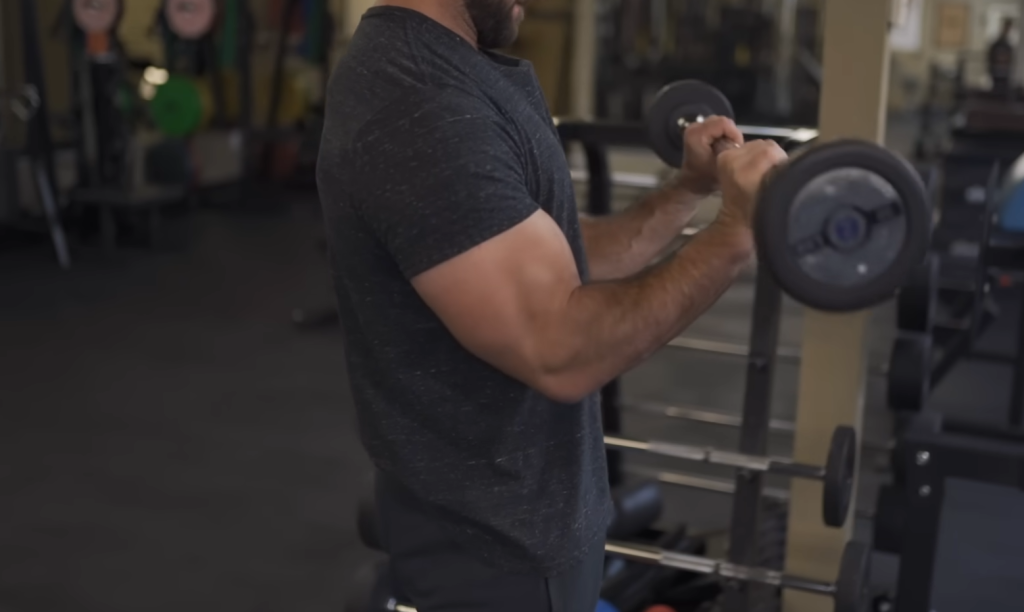
Why Does it Matter?
Knowing the predominant muscle fiber type in your brachialis can help you determine which training methods may be most effective for targeting this muscle. If you’re looking to increase strength and size, focusing on explosive exercises like dumbbell curls would be more beneficial than longer sets of lighter weight.
On the other hand, if your goal is to improve muscular endurance in your brachialis, incorporating more sustained movements such as hammer curls or reverse grip dumbbell curls would be more appropriate.
It’s also important to note that genetics play a role in the distribution of muscle fiber types. Some individuals may have a higher percentage of slow-twitch fibers in their brachialis, making them better suited for endurance activities. Others may have a greater proportion of fast-twitch fibers, making them more adept at explosive movements.
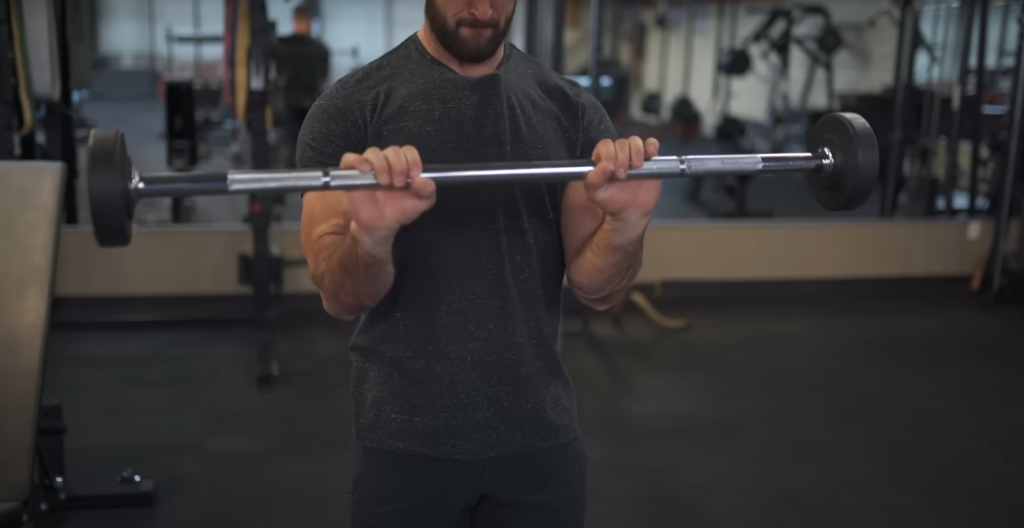
FAQs
What are some effective brachialis exercises using dumbbells?
Some effective brachialis exercises using dumbbells include hammer curls and reverse curls. Both of these exercises specifically target the brachialis muscle.
How often should I perform brachialis exercises with dumbbells?
It’s recommended to target each muscle group, including the brachialis, at least twice a week for optimal results. However, it’s essential to listen to your body and allow for rest and recovery when needed.
Can I use other equipment besides dumbbells for brachialis exercises?
Yes, you can also use cable machines, resistance bands, or even bodyweight exercises like push-ups to target the brachialis muscle. It’s important to consult a professional or do proper research before attempting new exercises with equipment.
Is it necessary to warm up before performing brachialis exercises with dumbbells?
Yes, warming up is crucial before any workout routine, including brachialis exercises with dumbbells. It can help prevent injury and improve performance by preparing your muscles for exercise.
What is the correct form and technique for these exercises?
Proper form and technique include keeping your core engaged, shoulders down and back, using a controlled motion throughout the exercise, and breathing properly. It can also be helpful to visualize the muscle you are targeting while performing the exercise.
Can these exercises be done at home?
Yes, brachialis exercises with dumbbells can be done at home as long as you have access to the proper equipment. However, it’s always recommended to consult a professional or do proper research before attempting new exercises. So even if you don’t have access to a gym, you can still effectively target your brachialis muscle at home with just a pair of dumbbells.
What weight dumbbell should I start with as a beginner?
As a beginner, it’s essential to start with a weight that you can comfortably lift for 12-15 repetitions. If the weights are too light, you can always increase the number of reps or sets to challenge your muscles. It’s important not to choose weights that are too heavy as this can lead to improper form and increased risk of injury. Gradually increase the weight as you become stronger. So start light and build your way up!
Can brachialis exercises with dumbbells improve sports performance?
Yes, strong brachialis muscles can assist in many daily activities and sports movements, such as lifting objects and throwing a ball. By incorporating these exercises into your routine, you can effectively strengthen this muscle and potentially improve your performance in various activities.
Are there any safety precautions I should be aware of when doing these exercises?
Yes, it’s always important to consult a professional or do proper research before attempting new exercises with equipment. It’s also crucial to listen to your body and stop if you experience any discomfort or pain. If you have any pre-existing injuries or conditions, it’s recommended to consult with a healthcare professional before starting a new workout routine. Safety should always be a top priority when exercising.
How do brachialis exercises with dumbbells improve arm strength and definition?
Brachialis exercises with dumbbells can improve arm strength and definition by specifically targeting and strengthening the brachialis muscle. This muscle plays a critical role in elbow flexion, which is necessary for many daily activities and sports movements. By regularly performing these exercises, you can increase your overall arm strength and enhance the appearance of defined muscles in that area. Additionally, as the brachialis muscle grows in size, it can also push up on the biceps, creating a more pronounced and defined appearance.
Can these exercises help with elbow joint stability?
Yes, brachialis exercises with dumbbells can also improve elbow joint stability by strengthening the surrounding muscles and providing support for the joint. This can potentially help prevent injuries and improve overall joint health. However, if you have any concerns about your elbow joint, it’s always best to consult with a healthcare professional before starting an exercise routine.
What other muscles are engaged during these exercises?
During brachialis exercises with dumbbells, other muscles that are engaged include the biceps, triceps, and forearm muscles. This is because these muscles work together to perform elbow flexion and support the arm during movement. By targeting multiple muscles in one exercise, you can efficiently strengthen and tone your arms while also improving overall coordination and control.
How long does it typically take to see noticeable changes in muscle mass and tone?
The time it takes to see noticeable changes in muscle mass and tone can vary depending on various factors such as genetics, diet, and exercise routine. However, with consistent and proper training, individuals can typically start seeing results within 4-6 weeks. It’s important to remember that everyone’s body is different, so be patient and stay dedicated to your workout routine for the best results. Keep in mind that proper nutrition and adequate rest are also essential factors in seeing changes in muscle mass and tone.
How do I know if I’m overtraining my brachialis muscles?
Overtraining can occur when you push your muscles too hard without allowing enough time for rest and recovery. Signs of overtraining may include decreased performance, increased fatigue, lack of progress, and frequent muscle soreness. If you experience any of these symptoms, it’s important to listen to your body and take a break from training. Remember that rest is just as important as exercise when it comes to building muscle and preventing injury. It’s also recommended to vary your workouts and give muscles time to recover before targeting them again.
Can brachialis exercises with dumbbells be incorporated into a full-body workout routine?
Yes, brachialis exercises with dumbbells can easily be incorporated into a full-body workout routine. These exercises can be combined with other upper body or total body movements for a well-rounded workout. It’s important to incorporate variety in your workouts to target different muscle groups and prevent boredom. Consult a professional or do proper research to create a personalized full-body workout routine that includes brachialis exercises with dumbbells for optimal results.
Conclusion
In conclusion, the brachialis muscle is an integral part of the upper arm and plays a crucial role in elbow flexion. It is often overlooked compared to other muscles such as the biceps or triceps, but neglecting to work on this muscle can lead to imbalances and potential injuries.
By regularly incorporating dumbbell exercises specifically targeting the brachialis into your workout routine, you can improve the strength and size of this muscle, leading to better overall arm development.
Some key tips to keep in mind when performing brachialis exercises with dumbbells include maintaining proper form, gradually increasing weight and resistance, and incorporating a variety of exercises to target different angles and ranges of motion.
Remember to also listen to your body and adjust accordingly, as everyone’s fitness level and capabilities are different.
In addition to aesthetic benefits, strengthening the brachialis can also improve everyday activities such as lifting objects and performing daily tasks that involve elbow flexion.
So don’t neglect your brachialis muscle any longer – start incorporating these dumbbell exercises into your workout routine for improved arm strength and functionality! Keep challenging yourself and stay consistent, and you will soon see the results of your hard work.
Thank you for reading this guide on brachialis exercises with dumbbells. We hope it has been informative and helpful in your fitness journey.
Now go out there and train those brachialis muscles to become stronger, healthier, and more balanced! Your arms (and overall health) will thank you. Good luck!

